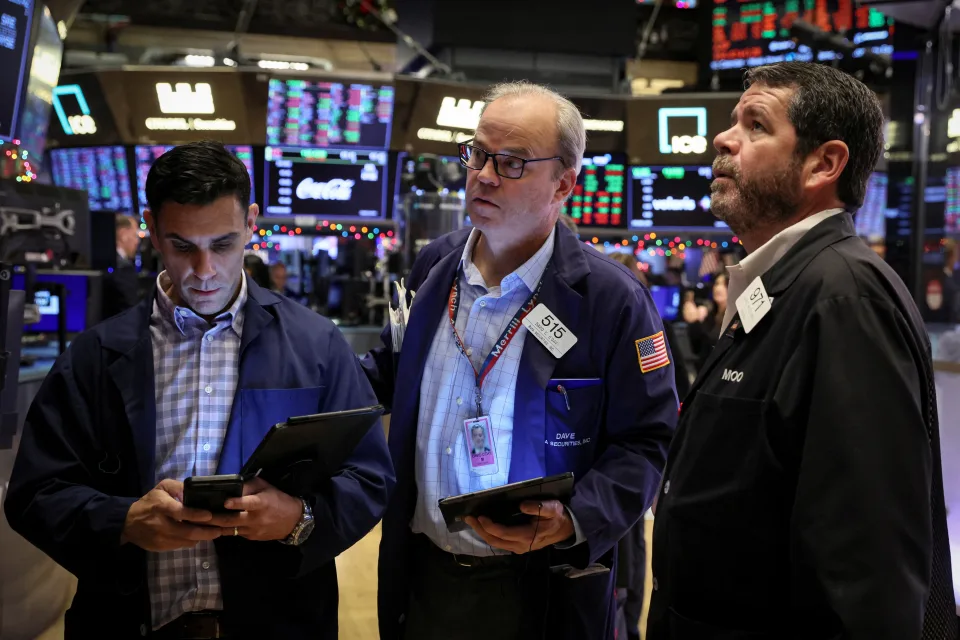U.S. stocks charged higher Thursday, led by a rebound across technology stocks, as investors attempted to salvage the last two trading days of a brutal year for markets.
The S&P 500 (^GSPC) gained 1.7%, snapping two days of losses, while the Dow Jones Industrial Average (^DJI) jumped nearly 350 points, or 1.1%. The technology-heavy Nasdaq Composite (^IXIC) surged 2.6%. The moves come after all three major averages erased more than 1% in the previous trading session.
Megacap tech giants Apple (AAPL), Amazon (AMZN), and Alphabet (GOOG, GOOGL) all gained 2.8%, helping lift the broader market after a sell-off over the past two days. The risk-off trade this week saw Apple fall below $130, which investors have flagged as a key technical level. Meanwhile, Amazon become the third of FAANG+ stocks — along with Meta (META) and Netflix (NFLX) — to erase its pandemic gains and close below its March 2020 COVID crash low on Tuesday.
Netflix (NFLX) rallied 5.1%, rising from a seven-week low, on the heels of a two-step upgrade by CFRA analyst Kenneth Leon to Buy from Sell.
Investors continued to watch a rebound in Tesla (TSLA) after the stock snapped a seven-day losing streak Wednesday after a multi-session selling spree over concerns around the shutdown at its factory in China. Shares rose 8.1% Thursday.
Electric vehicle peers Rivian (RIVN), Lucid (LCID), and Nio (NIO) all recovered alongside Tesla after electric carmakers were under pressure all week.
Cal-Maine Foods (CALM) shares sank 14.5%, even as the egg producer reported fiscal second-quarter earnings beat analyst estimates, with revenue jumping 110% over last year as inflation and the bird flu pushed up egg prices.
Elsewhere on Thursday, biotech company Kala Pharmaceuticals (KALA) spiked 99%, extending a surge after the stock quadrupled Wednesday following the Food and Drug Administration’s acceptance of the company’s investigational new drug application for treatment of a rare eye disease.
On the economic data front, filings for unemployment insurance rose to 225,000 in the week ended Dec. 24. from the prior week’s reading of 216,000, the Labor Department said Thursday. The print came in on part with consensus estimates from economists surveyed by Bloomberg.
In other markets, oil extended a drop after its recent rally, with West Texas Intermediate (WTI) crude futures — the U.S. benchmark — settling at $78.39 on Thursday.
U.S. Treasury yields dipped, and the U.S. dollar index also retreated.
Selling pressures across December spurred by concerns around rising interest rates and a looming economic downturn have continued into the end of the month and thrown a wrench into the seasonal year-end rally that typically occurs in the final trading days of the year.
“Many factors historically have driven the traditional environment supportive of year-end stock rallies, such as the investing of holiday bonuses, a seasonal optimism among consumers and investors, and tax considerations,” AXS Investments CEO Greg Bassuk said in a note. “However, with 2022’s dismal stock and bond performance expected to carry into 2023, along with ongoing inflationary concerns, uncertain Fed policy, and lingering geopolitical tensions, investors won’t be receiving any holiday gifts this year for their portfolios.”
U.S. and global stocks remain on pace for their worst drop since the 2008 financial crisis.

